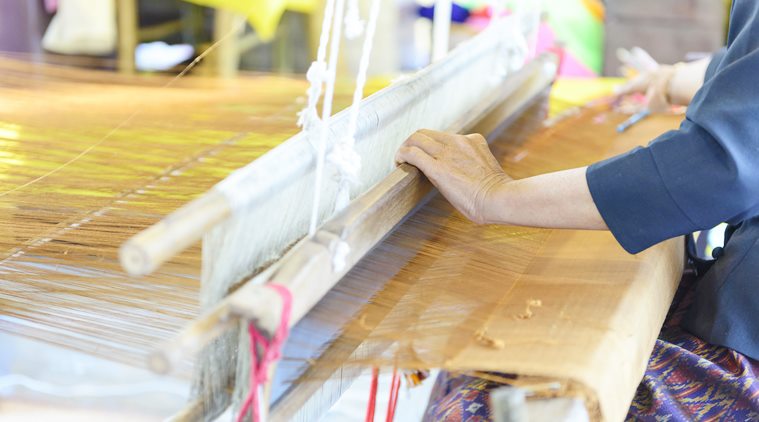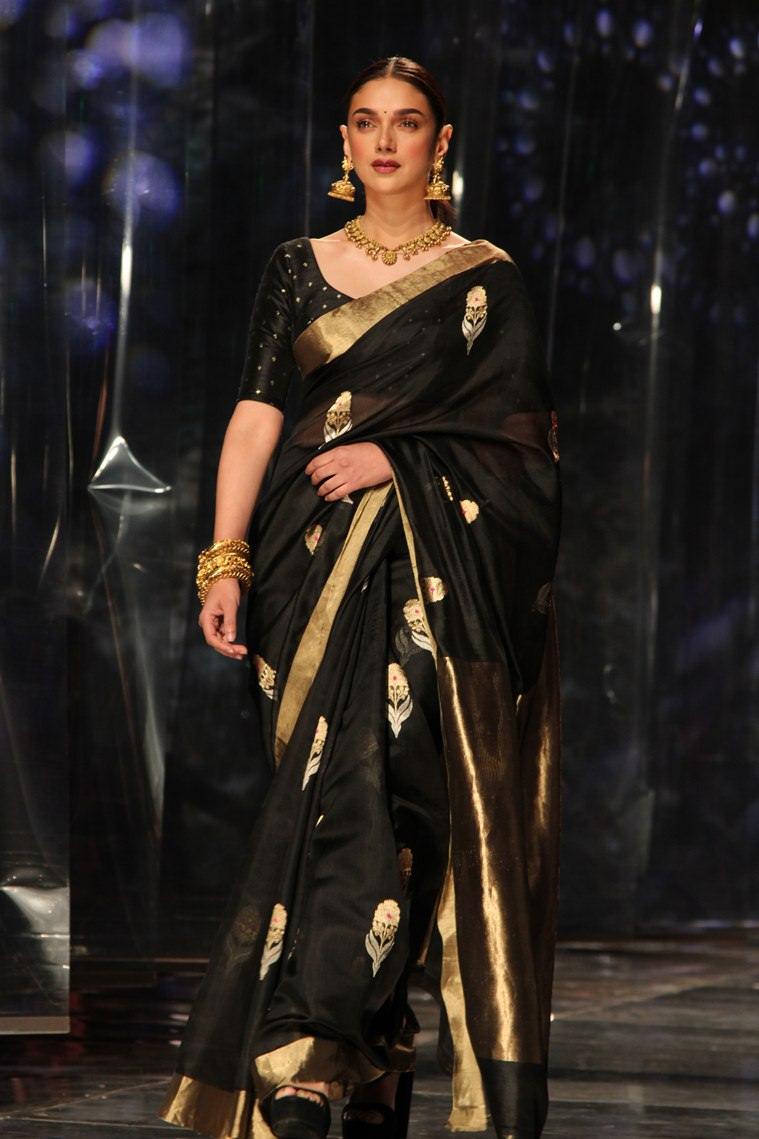- India
- International
Revisiting some rare weaves, this National Handloom Day
From north to south, east to west, India has rich handlooms and traditions defining the country’s cultural capital, woven with organic deftness.
 National Handloom Day celebrates the pluralistic traditions of the country. (Photo: Getty Images/Thinkstock)
National Handloom Day celebrates the pluralistic traditions of the country. (Photo: Getty Images/Thinkstock)
With #SareeTwitter taking the internet by storm to exhibitions highlighting the diversity of handspun weaves, it becomes imperative to observe National Handloom Day, which aims at celebrating the entrepreneurial spirit of artisans. Marking the onset of the Swadeshi Movement on August 7, 1905, the main event will be held in Bhubaneswar, Odisha (PIB), the state known for its rich legacy of crafts and looms.
National Handloom Day (August 7), launched in 2015, celebrates the pluralistic traditions of the country. From north to south, east to west, India has rich handlooms and traditions defining the country’s cultural capital, woven with organic deftness. They also act as an important source of income for the rural poor, contributing to objectives of sustainable consumption and production under the aegis of Sustainable Development Goal #12.
According to Handloom Export Promotion Council of India, there are 4.33 million handloom weavers in the country with 2.38 million handlooms installed in India. Moreover, there are more than 500 specialised handloom weaving clusters in the country (HEPC). From Champa in Chattisgarh, Sualkuchi in Assam, Patan in Gujarat, Chanderi in Madhya Pradesh, Paithani in Maharashtra, Sambhalpur in Odisha, to Kanchipuram in Tamil Nadu with many other clusters, act as epicentres of livelihoods and sustainability to scores of women, artisans, small scale entrepreneurs and craftsmen.
ALSO READ | Thread bare: A photo story on how tussar silk is made
Rare weaves and crafts
Popular weaves ranging from Banarasi weaves; Muga and Eri silks; Madurai Sungudi, Pochampally, Kasavu sarees; Kosa silks, Pashmina and many more are just some of the fine handlooms that have kept our cultural ethos alive through these living traditions of handicrafts and handlooms.

In this piece, we take a glimpse of some of the rare yet exquisite weaves, fabrics, and handiworks from the country (this is not an exhaustive list):
Baluchari sarees, West Bengal
Baluchari silk sarees, traditionally woven in Baluchar, Murshidabad district of West Bengal district in the state, are typically known for their beautiful mythological designs. These sarees known for intricate and meticulous motifs, derive inspiration from historical narratives, mythology and architecture. This saree has the Geographical Indication (GI) tag i.e. products native to a particular geographical area, which are protected. The most peculiar quality of these sarees is the intricate palluwork on them.
Bomkai sarees, Odisha
Hailing from the coastal district of Ganjam, Bomkai also has the GI tag and are woven by Bhulia weavers of the Subarnapur district in the state, according to secondary literature. Bomkai looms from Odisha are in cotton or silks and deploy thread work embroidered with Ikat techniques. These have nature-inspired designs, flowers, fish, traditional Rudraksh motifs, and other inspirations from nature.
Goan traditional Kunbi weaves
These weaves have been a quintessential part of traditional Goan attire, especially for women working on farms (paddy fields). Historically and popularly existing in beautiful shades of red with checkered designs of yellow or white, these cotton weaves, however, have very few weavers left practicing the art. There is an urgent need to revive the markets for these weaves, as has also been undertaken by designers, recently.
Kani shawls, Jammu and Kashmir
One of the oldest craft forms from the Kanihama area of Kashmir valley is the Kani shawl, which borrows its name from Kani, the wooden sticks deployed in weaving these shawls. Woven intricately with pashmina wool, the process of making these shawls is very intensive, making these very expensive and the work, elaborate. Kani shawls also have the GI status.
Moirang Phee textiles, Manipur
Hailing originally from Moirang village in Manipur, Moirang phee weaves get their name from a particular design ‘Moirang pheejin’, according to secondary sources. Moirang phee looms are important source of rural livelihoods to communities in the state. Beautiful borders and longitudinally carved patterns are a feature, with Moirang phee also having the GI tag from the state.
Karvati Kati sarees, Maharashtra
Karvati Kati silk sarees come from the Vidarbha region of Maharashtra. These are mostly woven in cottons or silk yarns; the tusser variant of which is very popular. The border designs of these sarees resemble the edges of a saw-tool. According to Sahapedia, the designs on these sarees take inspiration from the famous Ramtek Temple in Nagpur; and also have the GI tag.
Surat Zari crafts, Gujarat
Surat zari crafts are made with golden, silver zari threads, intricately used for embroidery on silk and cotton fabrics. Surat zaris are used elaborately and extensively in the textiles, apparel, handloom industries, and also has the GI tag.
Thirubhuvanam weaves, Tamil Nadu
Thirubuvanam sarees recently got the GI tag in 2019. These weaves are traditionally woven in zari and boast of an eclectic handiwork using filature silks, according to sources. These sarees are very heavy and don elaborate motifs and patterns.
Way forward
The above are just a few of the various handloom works India boasts of. Campaigns such as #Iwearhandloom, promotion of the ‘India Handloom Brand’, cultural diplomatic engagements involving usage of handlooms, crafts like the saree diplomacy, and indigenous artworks are important steps toward promoting this industry.
Similarly, effective implementation of schemes such as the Make in India to promote handlooms and crafts, Mudra scheme for women entrereneurs, the National Rural Livelihoods Mission, and mobilising SHGs are other bottom-up approaches. Additionally, popular cultural tools such as the 2018 release ‘Sui Dhaga’ are other ways to constructively change consumer preferences and help instill sensitivity and empathy toward our humble artisans.
 Aditi Rao Hydari in a handloom sari at Lotus Make-Up India Fashion Week. (Photo: APH Images)
Aditi Rao Hydari in a handloom sari at Lotus Make-Up India Fashion Week. (Photo: APH Images)
In order to cement these efforts contemporarily, efforts should be undertaken by online market places to augment the demand for these fabrics during days of such national importance, cultural significance, and festivals. A masterstroke would be to brand indigenous sarees and textiles at international platforms such as film festivals, encourage celebrities to further the cultural quotients at global pavilions, so as to provide a further impetus and make these products more globally visible, and contribute to development via forward and backward linkages.
Lastly and most important, in addition to existing capacity building programmes of artisans which the central and state governments undertake — increasing visibility to artists and their exposure to an urban interface especially women artists, is important. Dialogues and engagements with artists from these talent laden geographies as described above should be promoted in urban geographies, where the demand for these products is concentrated. These initiatives will be important confidence building measures, minimising the gap between urban consumers and rural producers, thereby promoting bottom-up principles of decentralised development, as envisaged during the Swadeshi movement.
Apr 24: Latest News
- 01
- 02
- 03
- 04
- 05



































